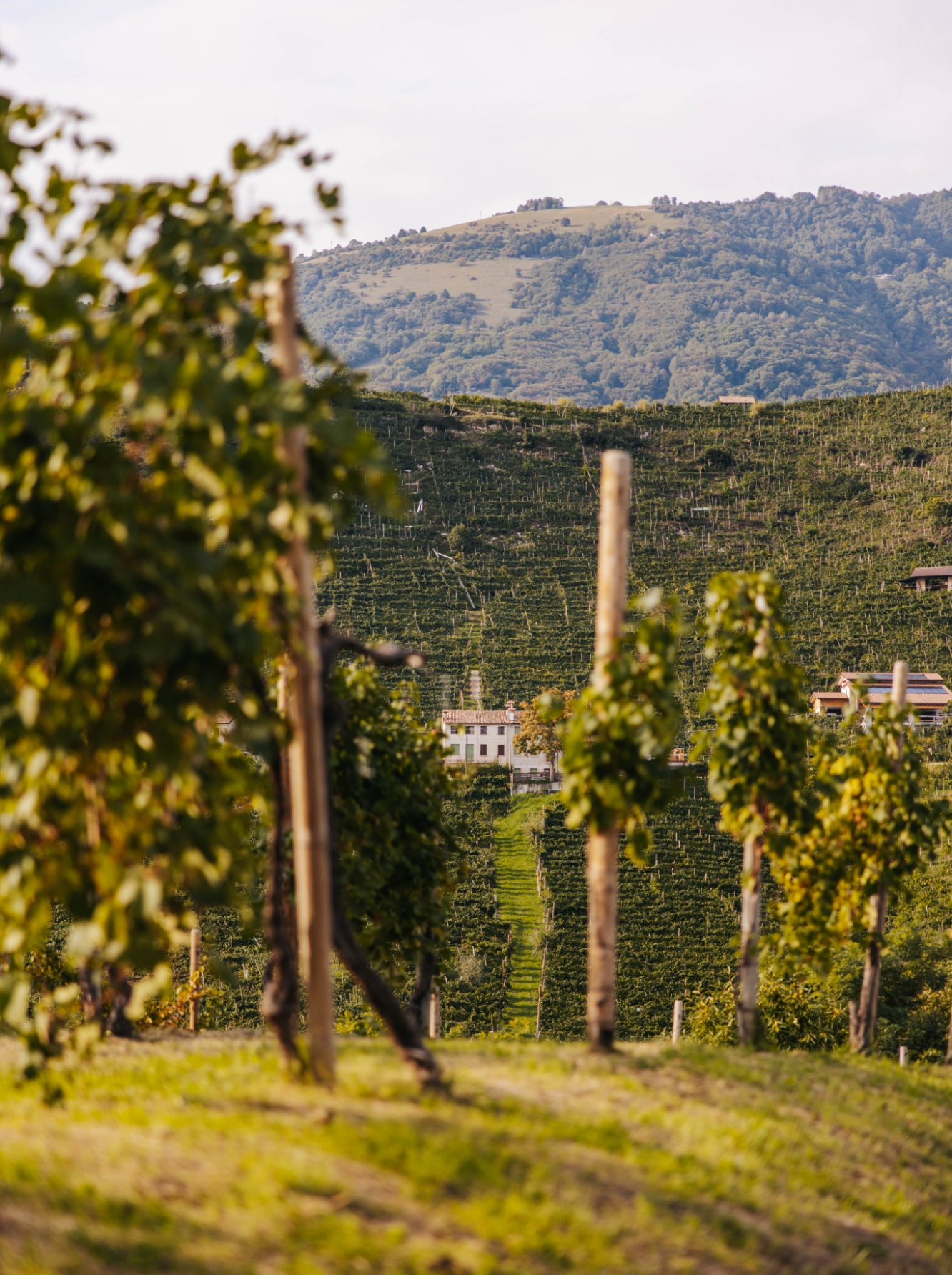Where we are
Over time, members have contributed through their work to preserve this immense heritage, taking care of this land of excellence for generations. An area that boasts a primacy not only as a reference point for high-quality viticulture and wine production in Veneto but also as a driving economic and employment hub for the entire industry-generated downstream sector.
The over 1000 hectares of vineyards owned by the members of the Cantina Produttori di Valdobbiadene, located at the foothills of the Treviso Pre-Alps, form a unique landscape in the world. In 2019, the site "Le Colline del Prosecco di Conegliano e Valdobbiadene," where the most prestigious vineyards of Cantina Produttori are situated, was inscribed on the UNESCO World Heritage List as a cultural landscape, where the significant work of the winemakers has contributed to creating a distinctive scenery.
The Conegliano-Valdobbiadene DOCG Area
In many regions, viticulture is deemed 'heroic' due to the steep slopes and rugged terrain where the grapes are cultivated. From these areas come the prized grapes for crafting Valdobbiadene Superiore di Cartizze and Rive DOCG, where the labor-intensive manual work, from pruning to harvest, defines the significant qualitative difference compared to other designations.
The wines of Cantina Produttori di Valdobbiadene thus stem from a well-established territorial winemaking tradition, passed down from generation to generation, deeply rooted in this place.
The Asolo DOCG Area
Asolo, among the most beautiful villages in Italy, is a treasure of history and art, culture and tradition, and lends its name to the Asolo Prosecco Superiore DOCG.
The vineyards located on the Asolo hills, south of the Grappa and Tomba mountains, enjoy excellent ventilation, significant temperature variations, and the grapes, handpicked, undergo careful selection.
The average elevation of the vineyards is above 200 meters.
The soil has a medium texture with a significant clayey prevalence and is slightly alkaline, representing a variety in the subsoil formation. It also has a high exposure to sunlight, favored by the vineyard's position, a good temperature range concentrated especially towards the end of summer that enhances aromatic components, good rainfall distribution, and the presence of the Prealps acting as a shield against cold winds from the north.
The Prosecco DOC Treviso Area
Prosecco Doc Treviso and, in an even larger area, Prosecco Doc are produced in flat areas with different characteristics. The grapes for the former are grown in 95 municipalities in the province of Treviso, while the latter is produced in a newer and larger area comprising 556 municipalities in the Veneto and Friuli regions, including the provinces of Gorizia, Pordenone, Udine, Trieste, Belluno, Padua, Venice, and Vicenza. The grapes destined for the production of Prosecco DOC mainly come from the Glera grape, a native variety of northeastern Italy, known since Roman times.
Glera is a white grape variety with hazel-colored shoots, producing large and long clusters with yellow-golden berries. Its cultivation involves not only the vertical orientation of the shoots and the elimination of excess ones but also pruning and tying interventions to create a microclimate suitable for the accumulation of aromatic substances on the berries. Alongside Glera, historically, other varieties are used, up to a maximum of 15%: Verdiso, Bianchetta Trevigiana, Perera, Glera lunga, Chardonnay, Pinot Bianco, Pinot Grigio, and Pinot Nero, vinified as white wine.

